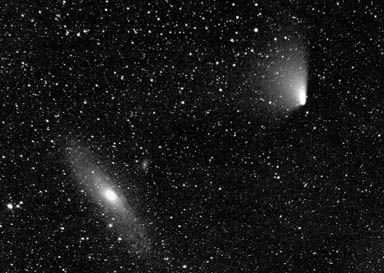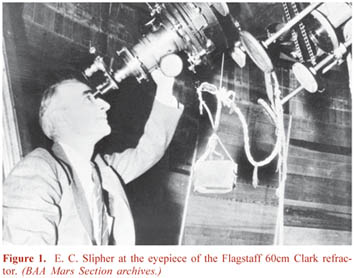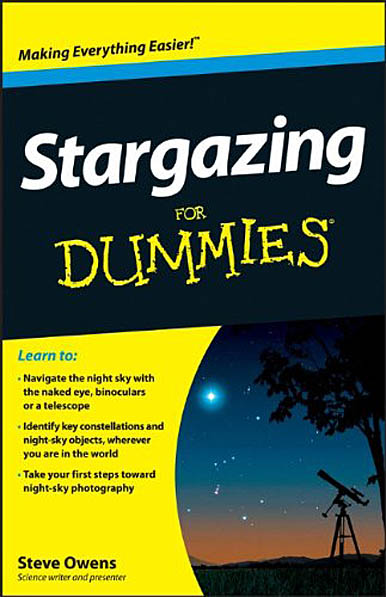 The
Journal of the British
Astronomical Association
The
Journal of the British
Astronomical Association
Volume 123,
No.3: 2013 June
 Summary
contents page
Summary
contents page
Detailed contents: Notes and News / Articles / Observers' Forum /
Reviews / Letters / Meetings / BAA Update


On
the cover: Saturn’s remarkable North Polar Hexagon
Top: Saturn’s N pole imaged by the Cassini orbiter on 2012 Nov 27 with near infrared filters centred at 750nm, showing the north polar hexagon. The rings behind the planet are partially hidden by the planet’s shadow. ©NASA, PIA14646.
Bottom: Amateur image by Darryl Milika & Pat Nicholas (Australia). 2013 Jan 26d, 18h39m UT. CM1= 273.5, CM2= 23.7, CM3= 319.7, 356mm Schmidt-Cass. The dark region around the North Pole (at bottom in both images) is the north polar hexagon.
These images form Figures 6 & 8 respectively of Mike Foulkes’ article in Notes and News below.

From the President (Bill
Leatherbarrow) / Comet PanSTARRS in March and April
(Nick James) / Interim report - Saturn at the 2012/2013 apparition (Mike Foulkes) / Solar Section (Lyn Smith) / The Radio Astronomy Group in 2012 (John Cook)
Right: Comet PanSTARRS appeared to pass close to the Andromeda Galaxy, M31, on 2013 April 5. Image by Nick James.
The 2012 BAA Presidential Address
The Amateur’s Moon: British selenography and the BAA Lunar Section ...
Bill Leatherbarrow
The history of selenography before the space age is the story of dedicated amateurs and their efforts to understand our nearest neighbour, at a time when that neighbour was almost completely neglected by professional scientists. Key roles were played in particular by German and British observers, possibly as a result of the superior telescopes being produced in those countries by the likes of Fraunhofer, Cook, With and Calver, etc. A list of the most prominent German selenographers would include Tobias Mayer, Johannes Schröter, Wilhelm Lohrmann, Beer & Mädler, Julius Schmidt, Johann Krieger, and Philip Fauth; but it is certainly the case that by the late nineteenth and early twentieth centuries the most significant contributions were also being made by British amateurs and by the BAA Lunar Section. It is that legacy I wish to analyse in this address.
Refereed papers


New colour images from old planetary photographs ...
Richard McKim & Johan Warell
This paper gives an account of an experiment carried out by the authors to digitise and stack images of Mars from the original glass plates taken by E. C. Slipher at the Lowell Observatory. Through this method we were enabled to make satisfactory colour composites by the use of modern image-processing techniques.
Limb projections on Saturn ...
Jeremy Shears & Richard Baum
While JS was carrying out research into the life of Thomas Hinsley Astbury (1858-1922), an unusual observation came to light that Astbury made of Saturn during the lunar occultation on 1900 September 3, which might be of interest to readers, especially planetary observers.


High precision photometry: Detection of exoplanet transits using a small telescope ... Darryl Sergison
The successful detection and measurement is reported of milli-magnitude scale lightcurve dips caused by the transits of known exoplanets in front of their parent stars. Data have been obtained using a small aperture (0.25m) telescope from Gothers Observatory, a non-optimal sea level coastal location in Cornwall, UK. Observations of five transiting systems, HAT-P-9b, HAT-P-13b, TrES-1b, TrES-3b and Gliese 436b indicate that transit studies with a precision of better than ±4mmag are regularly achievable and that useful transit timing and depth measurements may be made.
Perseids 2012 -- Multi-station meteor videography ... Alex R. Pratt, William Stewart & Leonard Entwistle
This paper describes a network of low-light video cameras operated from Cheshire and West Yorkshire that monitors the activity of meteor showers, enables the precision measurement of radiant positions and, from the best quality data, estimates the altitudes and geocentric velocities of meteors and their solar system orbits. The results from multi-station observations of the Perseid meteor shower in 2012 August are presented and discussed.
CU Hydrae: A neglected bright eclipsing binary star ... Tom Richards, Col Bembrick, Terry Bohlsen, David Boyd, Phil Evans, Yenal Ogmen, Roger Pickard & Margaret Streamer
CU Hydrae was studied by seven observers as part of the joint Equatorial Eclipsing Binaries Project of Variable Stars South and the British Astronomical Association Variable Star Section. This observational work was carried out over two seasons in 2010 and 2011, with 59 nights of data acquired. These data were used to derive new light elements and a phase diagram. Available minima data prior to ours in time was investigated to see if they would support evidence of a period change. A physical model of a near-contact system was developed in BinaryMaker 3 to fit the phase data, though without higher quality temperature or colour data it is not well constrained.
The brightness of comet 67P/Churyumov-Gerasimenko ... Jonathan Shanklin
Comet Section records of 67P/Churyumov-Gerasimenko have been analysed to catalogue the comet’s behaviour over previous visually observed apparitions. Predictions are made for future returns.
 Click
here to obtain a PDF file of any of these articles
Click
here to obtain a PDF file of any of these articles
Reviews


Stargazing for Dummies by
Steve Owens,
Wiley, 2013. ISBN 978-11184-1156-8. Pp 332, £12.99 (pbk).
 Reviewed
by Bob Mizon
Reviewed
by Bob Mizon


Heart of Darkness: Unraveling the Mysteries of the Invisible Universe by
Jeremiah P. Ostriker & Simon Mitton,
Princeton University Press, 2013. ISBN 978-0-691-13430-7. Pp xxi + 299, £19.95 (hbk).
 Reviewed
by Rosalind Armson
Reviewed
by Rosalind Armson
CLICK HERE to read scores
more authoritative book reviews from the BAA Journal
Meetings
- Ordinary Meeting, 2012 December 15 ... Alan Dowdell
 The 2012 BAA Christmas Lecture ‘Black Holes: a road to unity for theoretical physics?’... Paul Abel
The 2012 BAA Christmas Lecture ‘Black Holes: a road to unity for theoretical physics?’... Paul Abel
Why not join
us at a BAA meeting near you? Meetings are open to all and you will be
made very welcome. Click here for the latest Meetings Diary

- Hoag’s Object: A mysterious ring-shaped galaxy ... Callum Potter
- GRB130427A – so near yet so far ... David Boyd
- Partial lunar eclipse of 2013 April 25 ... Alan C. Tough
Hoag’s Object imaged from the UK with a 25cm Newtonian & MX716 CCD camera, 150x30s images. Grant Privett.
Letters
- Tables of ‘constants’ in the BAA Handbook ... Rosalind Armson, Christopher Taylor
BAA Update
- Meeting of the Radio Astronomy Group, 2012 October 27 ... Diane Swan
- Obituary: Charles Chilton, 1917-2013 ... Hazel McGee
- Obituary: Alan C. Heslop, 1937-2012 ... Len Clucas
- Citations for the BAA Awards & Medals, 2012
 The night sky for
June & July: Sky
notes ... by Brian Mills
The night sky for
June & July: Sky
notes ... by Brian Mills
Back to top of page
 Go to the BAA
Journal home page
Go to the BAA
Journal home page
 The
Journal of the British
Astronomical Association
The
Journal of the British
Astronomical Association The
Journal of the British
Astronomical Association
The
Journal of the British
Astronomical Association


 Notes and News
Notes and News



 Click
here to obtain a PDF file of any of these articles
Click
here to obtain a PDF file of any of these articles
 Reviewed
by Bob Mizon
Reviewed
by Bob Mizon

 Reviewed
by Rosalind Armson
Reviewed
by Rosalind Armson The 2012 BAA Christmas Lecture ‘Black Holes: a road to unity for theoretical physics?’... Paul Abel
The 2012 BAA Christmas Lecture ‘Black Holes: a road to unity for theoretical physics?’... Paul Abel
 Observers’ Forum
Observers’ Forum The night sky for
June & July: Sky
notes ... by Brian Mills
The night sky for
June & July: Sky
notes ... by Brian Mills